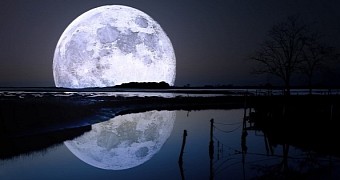In a recent study, Purdue University scientist Jay Melosh and fellow researchers propose the existence of massive lava tubes just beneath the surface of our natural satellite, the Moon.
The specialists say that, if such tubes do, in fact, exist on the Moon, it might be possible to turn them into underground shelters of sorts for crews of astronauts.
Thus, the scientists imagine space explorers setting up camp inside such geological formations to keep safe from extreme temperatures, cosmic radiation, and potential meteorite impacts.
What is a lava tube anyway?
In the paper detailing their work, the Purdue University researcher and his colleagues explain that, when volcanic eruptions happen and lava begins to seep out of the ground, the edges of the resulting fiery rivers eventually cool up to the point of forming a crust.
When the eruption halts, this hardened crust stays in place and ends up forming a tunnel. Depending on the width and height of the lava flows that created them, the tunnels can greatly vary in size, Science Daily explains.
Lava tubes are known to exist on our planet. Interestingly, Jay Melosh and his team argue that, since the Moon's gravity is much lower than that of Earth, chances are this natural satellite could accommodate for mammoth lava tubes.
The researchers say that, according to their calculations, tunnels made of cooled lava and measuring as much as 5 kilometers (about 3 miles) could form and remain stable for millennia on the Moon. It's such tunnels that they imagine turning into shelters for astronauts.
“Gravity is much lower on the Moon and lunar rock doesn't have to withstand the same weathering and erosion. In theory, huge lava tubes - big enough to easily house a city - could be structurally sound on the moon,” says scientist David Blair.
Evidence of lava tubes on the Moon
The specialists behind this research project explain that, as shown by investigations carried out over the years, the Moon sports several long and quite deep depressions on its surface. Of these, some are up to 10 kilometers (roughly 6 miles) wide.
The odd geological features, known to scientists as sinuous rilles, are believed to be evidence that lava rivers once flowed on the surface of the Moon, transforming local landscapes.
Provided that these assumptions are spot on, the same lava flows that created the sinuous rilles now visible on our natural satellite could have also birthed underground tunnels whose width would rival that of the surface depressions.

 14 DAY TRIAL //
14 DAY TRIAL // 

